Tremendous thanks to costume designer Sandy Powell for answering a few questions about her costume designs for Hugo. Powell also shared some of her costume sketches, which you'll see throughout this post. See a selection of Hugo costumes at the FIDM Museum through April 28, 2012.
Directed by Martin Scorsese, Hugo takes place inside a 1930s Paris train station. The film tells the tale of Hugo, a young orphan who lives a hidden life inside the nooks and crannies of the bustling station. Though only a child, Hugo gradually unravels a mystery involving his father, a magnificent automation and a cinematic pioneer. Hugo is nominated for 11 Academy Awards, including a nomination for Best Costume Design.
An accomplished costume designer, Powell has costumed over 30 films and been awarded 3 Oscars. The FIDM Museum has exhibited many of Powell's costumes, including her costume designs for The Tempest (2010) and The Aviator (2004). In 2009, we exhibited costumes from The Young Victoria (2009), the film that earned Powell her most recent Academy Award for costume design.
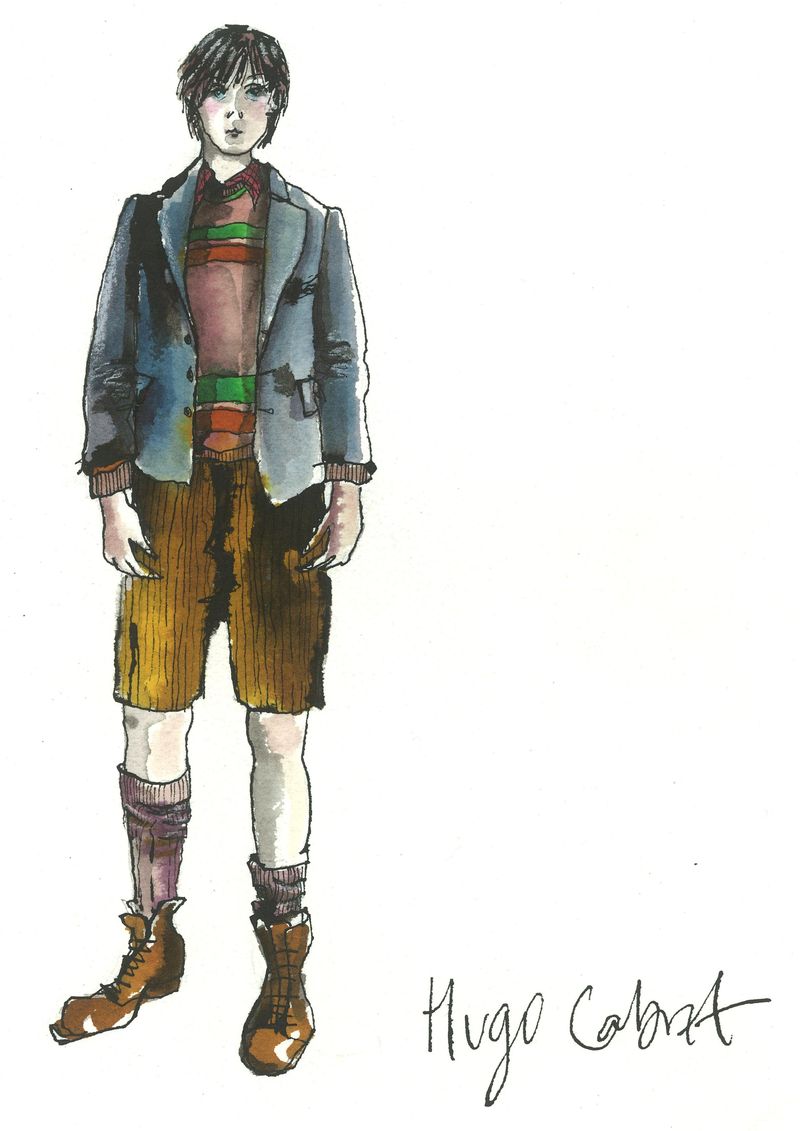 Hugo is based on the illustrated novel The Invention of Hugo Cabret by Brian Selznick. Did you consult the book or its illustrations when designing costumes for the film?
Hugo is based on the illustrated novel The Invention of Hugo Cabret by Brian Selznick. Did you consult the book or its illustrations when designing costumes for the film?
The book was constantly referred to by everyone in every department on the film. Although I didn't ever copy anything exactly from the illustrations, they served as inspiration for the feeling and tone of the whole look and helped differentiate the characters.
 When researching costume history, it is often easier to find sources and images describing dressy/best clothing. Hugo and his companions at the train station are (mostly) working class; what resources did you consult when designing their costumes?
When researching costume history, it is often easier to find sources and images describing dressy/best clothing. Hugo and his companions at the train station are (mostly) working class; what resources did you consult when designing their costumes?
Actually, we tried to cover a cross-section of classes in the station as we wanted the crowd to cover all walks of life. In terms of research for the lower and working classes, there are a lot of photographers we referenced. These included the street photography of Brassai, Doisneau and Kertesz. Martin Scorsese also screened films for us to watch such as Under the Rooftops of Paris and La Bete Humaine, to name just a couple. There are A LOT of people milling around the train station. How do you manage costuming for such a large group?
There are A LOT of people milling around the train station. How do you manage costuming for such a large group?
With a very large department! Most of the extra's costumes were rented from costume houses around the world: Angels and Cosprop in London, Western and Palace in Los Angeles, Cornejo in Madrid and Tirelli and Peruzzi in Rome. We also purchased a lot, scouring flea markets and buying from dealers worldwide. In order to fit and dress the huge numbers, I needed a big department of skilled fitters. I had 2 regular assistants I worked with in charge of female and male fittings. I would give them reference material and brief them in the look for each specific group of extras. They would then work with a team of fitters and alterations seamstresses to make the characters come to life. I really couldn't have achieved the look of such a varied and interesting group of extras without the special skills of my creative team.
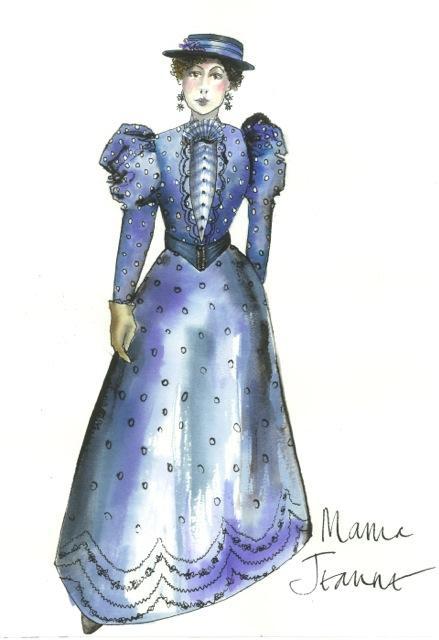 Hugo has a very unified color palette. A beautiful blue appears in several of the costumes (a stripe in Hugo’s sweater, the Station Inspector’s uniform, etc.), along with maroon and an orangey/mustardy yellow. How does this unified color scheme affect the mood of the film? Was it necessary to create most of the costumes from scratch?
Hugo has a very unified color palette. A beautiful blue appears in several of the costumes (a stripe in Hugo’s sweater, the Station Inspector’s uniform, etc.), along with maroon and an orangey/mustardy yellow. How does this unified color scheme affect the mood of the film? Was it necessary to create most of the costumes from scratch?
All of the principal costumes were created from scratch along with a lot of the key costumes from the flashback scenes in the Méliès studio. This was a necessity as for the kids, we had to allow for growth and also I wanted the look to be very particular and coordinated. The use of the green/blue or blue/green (however you wish to see it!) of the Station Inspector's uniform was deliberate so as to be able to identify him from across a crowded station. In reality the French railway uniform would have been a dark blue which on camera in HD would have read as black and therefore not been very interesting. Since this is a film to capture the imagination of children as well as adults I wanted to use a colour that would resonate and therefore was able to use a bit of artistic license in doing so. I think the echoes of that colour around are either coincidental (it's one of my favourite colours!) or to do with how the colour palette of the film as a whole was designed. I know for example that the set decorating department used the uniform colour as a springboard to work with and against.
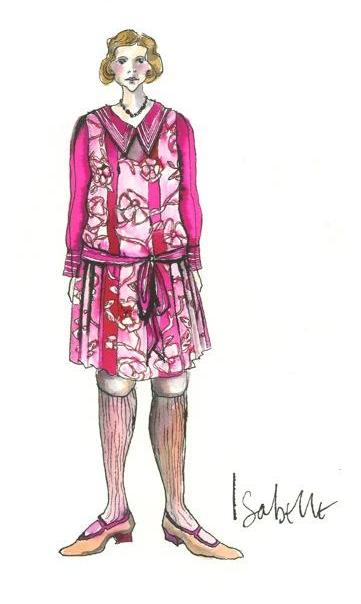 Hugo is an active kid with a dirty, scrappy life. How did you account for this when making his striped sweater, jacket and short trousers? Did you need to make multiples?
Hugo is an active kid with a dirty, scrappy life. How did you account for this when making his striped sweater, jacket and short trousers? Did you need to make multiples?
We needed to make multiples to show the deterioration of the period of time and also to allow for growth! I wanted his jacket and trousers to always be a bit small to show that he was alone, with no one to look after him and buy him new clothes once he had grown out of them. I also didn't want them to be too small as to look comical. The striped sweater was based on an old sweater I found and had copied. As soon as I put it on Asa [the actor who portrayed Hugo] I knew we had found the look. Again, like the Station Inspector's uniform, I wanted something simple that could be recognised from afar.
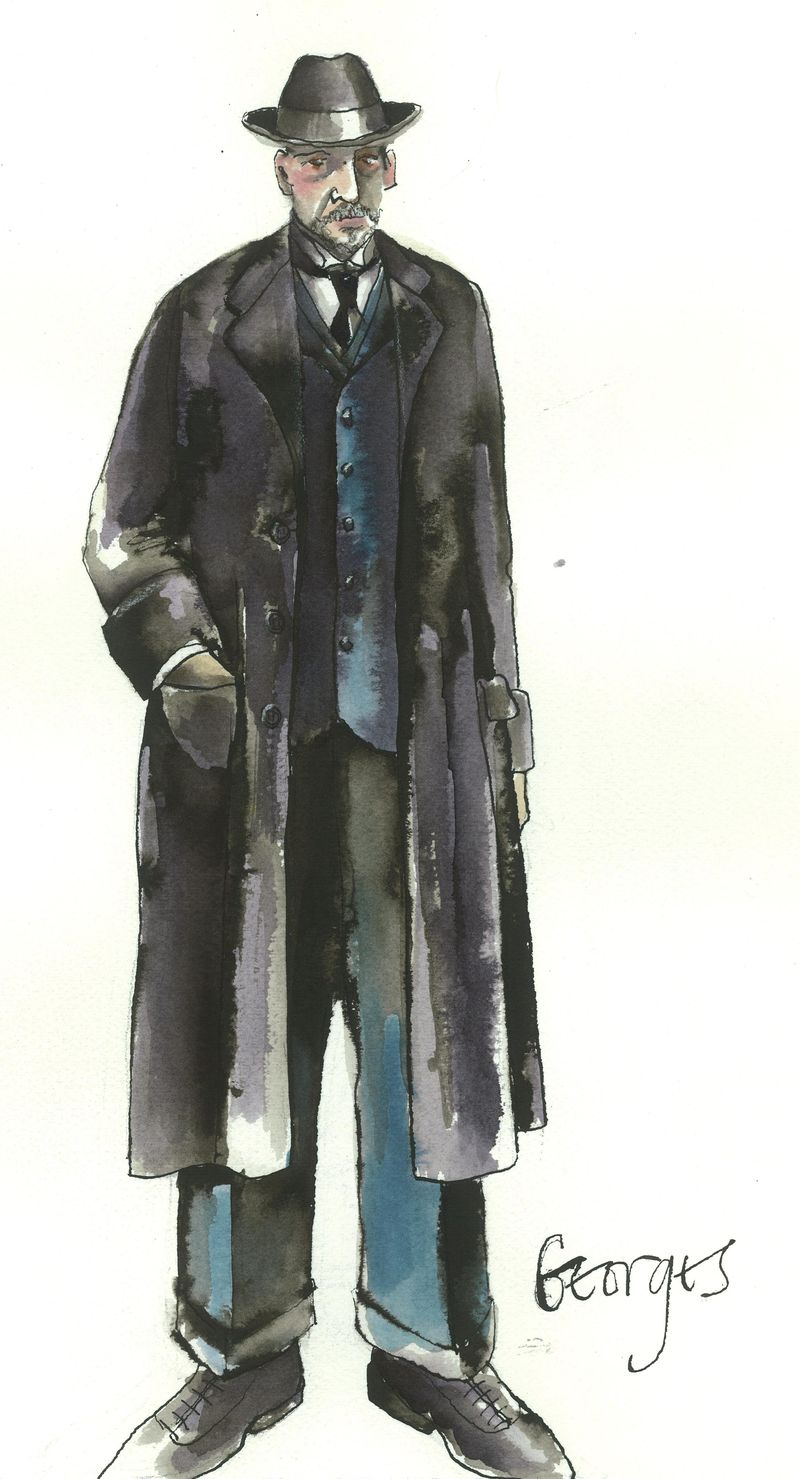 The costumes you created for the flashbacks to Georges Méliès film career contrast vividly with the more workaday costumes worn by the characters outside these flashbacks. Including life-size lobsters, reclining goddesses and a variety of other fantastical characters, these costumes introduce a wonderful visual element to the film. Did you reference Méliès work when creating these costumes?
The costumes you created for the flashbacks to Georges Méliès film career contrast vividly with the more workaday costumes worn by the characters outside these flashbacks. Including life-size lobsters, reclining goddesses and a variety of other fantastical characters, these costumes introduce a wonderful visual element to the film. Did you reference Méliès work when creating these costumes?
Yes of course, we watched hundreds of Méliès films, particularly the ones that Scorsese was referencing. I tried where possible to recreate the originals, but found it was quite difficult to see exactly how things were made or what they were like in detail. Consequently I decided to design my own versions but [was] very much influenced by the charming somewhat naif look of the originals on film. I loved having the opportunity to create such different looks in one film.
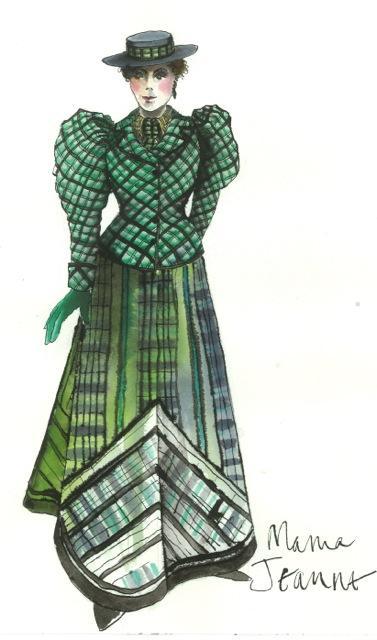 Can you tell us what projects you’re currently working on?
Can you tell us what projects you’re currently working on?
Actually I have had a self-imposed sabbatical for a year and am waiting to find out what I'm doing next!


3:50, 2/27/12
Just saw the movie and would like to get pattern (or the color sequence) for Monsieur Frick’s “courting” scarf. Is that possible?